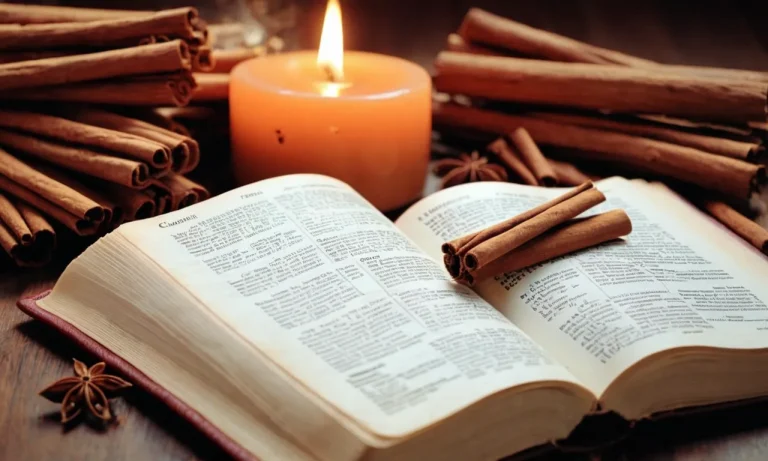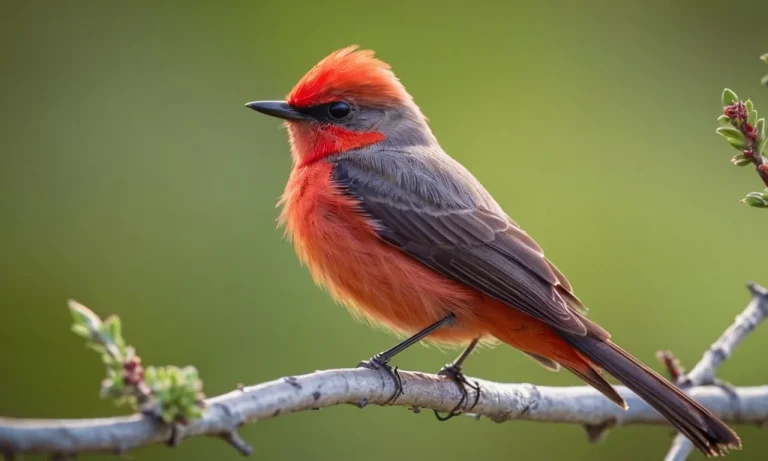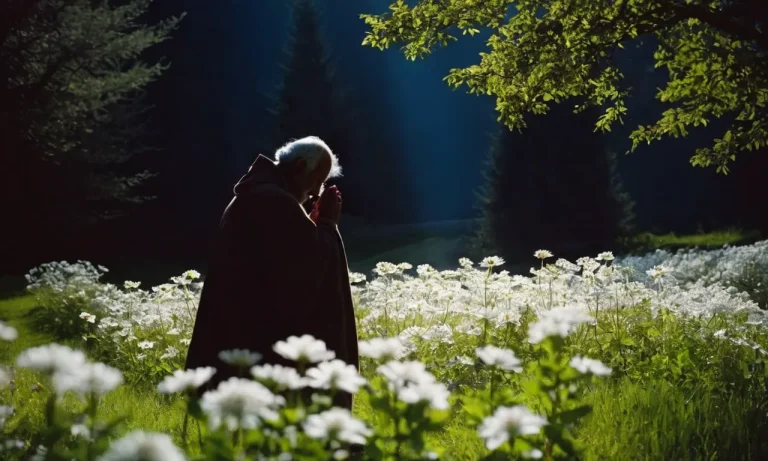The Christmas cactus is a popular holiday plant that has become a staple decoration in many homes during the festive season. But beyond its bright flowers and role as a living Christmas decoration, this plant also carries interesting symbolic meanings.
If you’re short on time, here’s a quick answer: The Christmas cactus symbolizes hope, renewal, and connectedness.
In this comprehensive guide, we dive deep into the history, legend, and folklore surrounding the Christmas cactus to explore its spiritual meaning and symbolism. We’ll uncover why this classic holiday plant is so much more than meets the eye.
The History and Origins of the Christmas Cactus
Native Range and Features
The Christmas cactus (Schlumbergera bridgesii) is a unique kind of cactus that originates from the coastal mountains and forests of southeastern Brazil, where it grows epiphytically on trees or on rocks as an epilith (World of Succulents).
Unlike most cacti that thrive in arid deserts, the Christmas cactus naturally resides in tropical rainforests and is accustomed to humid conditions. Some key features include:
- Flattened stem segments with scalloped edges
- Spectacular, brightly colored flowers in shades of red, pink, white, purple, or orange
- Blooms during the holiday season in late fall and early winter
Arrival in Europe
The earliest recorded Christmas cactus plant arrived in Europe in 1818 after it was brought over from Brazil by the colonial botanist and plant hunter William Cattley (CactiGuide). Cattley successfully grew the cactus and flowered it in his garden.
It promptly became a widespread sensation across England and Europe, celebrated for its rare winter blooms. The genus Schlumbergera was later named in honor of French collector Frederic Schlumberger.
By the mid to late 1800s, the Christmas cactus made its way into many prestigious European plant collections and botanical gardens thanks to aristocratic patrons who developed an keen interest in exotic tropical species (House Beautiful).
Its festive red and pink flowers charmed growers, who supplied cuttings widely to share its holiday cheer.
Journey to North America
German and English immigrants first introduced the Christmas cactus to early American settlers. It steadily grew popular across the Eastern U.S. as an easy-to-grow houseplant that reliably bloomed around Christmas each year.
Growers in the Southern U.S. also found success cultivating Christmas cacti outdoors in milder temperatures (World of Garden Plants).
Today the Christmas cactus remains a quintessential holiday plant across North America. Many families pass down treasured specimens for generations as they thrive for over 50 years with proper care! It continues to put on a stunning show year after year. 😊👏 Some fun facts:
| First arrived in North America | Early to mid 1800s |
| Most popular flower colors | Red and pink |
| Average lifespan | Over 50 years |
Legend and Folklore of the Christmas Cactus
Stories Link it to Christian Holidays
The Christmas cactus (Schlumbergera bridgesii) is often associated with Christian holidays due to folklore about its winter blooming season. According to Brazilian legend, the plant blossoms around Christmastime as a symbol of the Star of Bethlehem that guided the three wise men to Jesus. This story linked the plant to nativity celebrations and reinforced its nickname as the “Christmas cactus.”
Other apocryphal tales suggest that the folded shape of the Christmas cactus leaves resembles arms crossed in prayer. This characteristic supposedly inspired the plant’s Latin name, Schlumbergera, after French collector Frederic Schlumberger who described the species in the 19th century.
Schlumberger stumbled upon the cactus in the coastal mountains of Brazil around Christmastime, perpetuating its yuletide mythos.
Legends About its Winter Blooming
The Christmas cactus is one of the few cacti species that blooms during the winter, leading to speculation about the reasons behind its unusual flowering schedule. According to Aztec mythology, the winter bloom represented a gift from god to give festive joy in bleak months.
In the Victorian era, stories claimed the plant blossomed in December to announce the Christian celebration of Jesus’ birth.
Other folk tales suggest more supernatural influences for the colorful holiday flowers. One Brazilian legend states that hummingbirds blessed the cactus blossoms so they could provide nectar during winter months when most plants lie dormant.
Traditional Christmas carols like “We Need a Little Christmas” reflect the belief that the cheerful cactus blooms can brighten midwinter gloom.
Meaning in Victorian Flower Language
The Christmas cactus became a popular houseplant during the Victorian era when people ascribed special meaning to different flower varieties. As the name indicates, its winter blooming linked the Christmas cactus to the Advent season.
Victorians used flowers as a “language” to express emotions and sentiments – the Christmas cactus flower symbolized a wide range of positive concepts like joy, goodwill, desire, and determination. People often gave its holiday blooms as Christmas gifts or Yuletide decorations to share these uplifting messages.
| Meaning | Description |
|---|---|
| Joy | Its bright colors and holiday cheer convey gladness |
| Goodwill | Its winter flowering represents benevolence and kindness |
| Desire | Its unique beauty indicates temptation or longing |
| Determination | Blooming despite winter’s adversity shows resolve |
So while the Christmas cactus offers festive beauty, Victorian flower lovers embraced it as a meaningful symbol of human virtues. Those nuanced connotations got woven into modern yuletide lore about this holiday houseplant.
So a potted Christmas cactus still evokes positive traits like tenacity and generous spirit over the December holidays – exactly what the Victorians had in mind!
Symbolic Meanings of the Christmas Cactus
Hope
With its late autumn bloom timed around the holiday season, the Christmas cactus has taken on potent symbolism related to hope. As many plants enter dormancy in winter, the vibrant pink, red, white or purple flowers of the Christmas cactus defy the season by bursting into full radiance.
For many, they represent the miracle of new life emerging even in the darkest times.
Legends associate the cactus blooms with the flowers that sprouted from the earth where Santa Claus’s reindeer rested on Christmas Eve. This lore cements the plant as an auspicious symbol reinforcing people’s hopes during the holidays.
Its flowering cycle also connects it to Advent, representing the anticipation leading up to Christmas.
Native to South American rain forests accustomed to seasonal rains and droughts, the Christmas cactus displays remarkable resilience. After periods of restraint, its extravagant blooms convey a feeling of optimistic relief.
Just when conditions seem bleakest, the colorful flowers arrive as an uplifting harbinger of better times to come.
Renewal and Rebirth
The Christmas cactus makes an excellent gift for friends or family who have faced challenges in the past year. Its wintertime blossoms represent renewal after periods of dormancy, promising rejuvenation and a brighter future.
Seasonal associations also link the Christmas cactus to rebirth. In the natural world, late December marks the return of longer days and the first stirrings of new growth. The cactus flowers mirror this shift, showing even without leaves or visible signs of life, vitality persists inside.
Year after year as the holiday cactus blooms, it activates a sense of perennial hope. Despite past struggles, each flowering represents a chance to start fresh. The recurring blossoms convey nature’s steadfast cycle of regeneration.
Connectedness and Community
Christmas cactus plants frequently spread through clippings shared between family and friends. As they are passed on and multiply, each iteration represents the nurturing relationships at the core of human experience.
Exchanging cuttings extends a plant’s legacy across generations and social circles, weaving living bonds out of botanical stock.
Often featured prominently in holiday decorating, Christmas cactus displays also reinforce social connections. The traditional plants adorn mantles and tabletops alongside treasured greeting cards, serving as botanical reminders of absent loved ones.
Through decorative use, the lush green cacti and their vibrant blooms signify community ties spanning distance and time.
The holidays represent a season of gift-giving, and the Christmas cactus makes a meaningful present. By hand-selecting a thriving plant to share with someone special, givers translate their affection into a living memento.
In the spirit of Christmas generosity, love for others finds expression in the form of botanical life.
Conclusion
With its rich history and cultural lore, the Christmas cactus carries meanings that inspire hope, renewal, and connectedness – fitting symbols for a plant that blossoms in the heart of winter. As you decorate your home with this beloved holiday plant, appreciate the stories and symbolism it brings along too.






